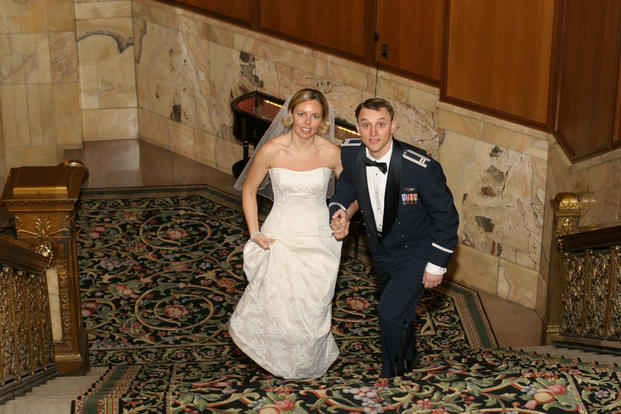Around here massive new personnel reports that land in our inboxes are met with “oooh” and “aaaaahhh.” Nothing like some fun new data on the good people of the U.S. Military to get your day started off on the proper foot, am I right?
OK, you're not quite as wonky as we are, and that’s perfectly fine. Because we are here to cut through the pages of “who cares?” for you and peel out the stuff that you actually want to know. And here it is:
The military marriage rate is pretty much the same as the civilian marriage rate with one pretty big exception – while the civilian marriage rate has gone down since 2000, the military marriage rate has gone slightly up.
I can see you’re wondering why that is surprising. But trust me, it is. Over the last several years I have heard multiple experts tell me that the military marriage rate is higher than the rate in the outside world because of all the sweet perks getting married in the military gives you. More people get married and many, many of them get married young compared to their civilian peers, they say.
The young thing is still spot on, and this new 2014 demographic report, which you can read for yourself here, didn’t really go into age details (although it did break marriage down by rank, and you could do some fun average age estimating based on that if you really wanted to).
But the “so many more people are married in the military” thing isn’t true, at least as far as this data is concerned.
Let’s dig in.
According to the report, the average age of enlisted and officers across the force is 27.3 and 34.8 years-old respectively. The average married age of those groups is 30.3 and 36.9 – so just a tad older than the overall average of the force.
Now, it’s important to note that the civilian data isn’t necessarily apples to apples. For example, the military information goes through 2014 – while the civilian data, which you can read about thoroughly in this story, stops in 2012.
In 2000, the civilian marriage rate was 57.4 percent and, by 2012, had steadily gone down to 50.5 percent, according to this data. The military rate, on the other hand, was 53.1 percent in 2000. It went slightly up for awhile as the wars escalated, peaking at 56.6 percent in 2011, and has since gone down again to 56.1 percent in 2012 (where the civilian data stops) and 55.3 percent today.
That about 5 percent difference between military and civilian marriage rates isn’t that interesting. But the steady decline among civilians as compared to the military, in my view, tells a nice little story – but not the one we so often hear of huge marriage rates in the military.
What it says to me is that, yes, military marriage is a sweet enough deal benefits-wise to keep the rate from marching down while the rest of society either delays marriage or chooses to ignore it all together.
But it is NOT the best deal ever that so many military benefits detractors make it out to be. It is not tricking every member of the force into getting hitched just to land that housing allowance increase. It is not making All The Troops get married when they otherwise would not have. And that's important to know.
Keep Up with the Ins and Outs of Military Life
For the latest military news and tips on military family benefits and more, subscribe to Military.com and have the information you need delivered directly to your inbox.










